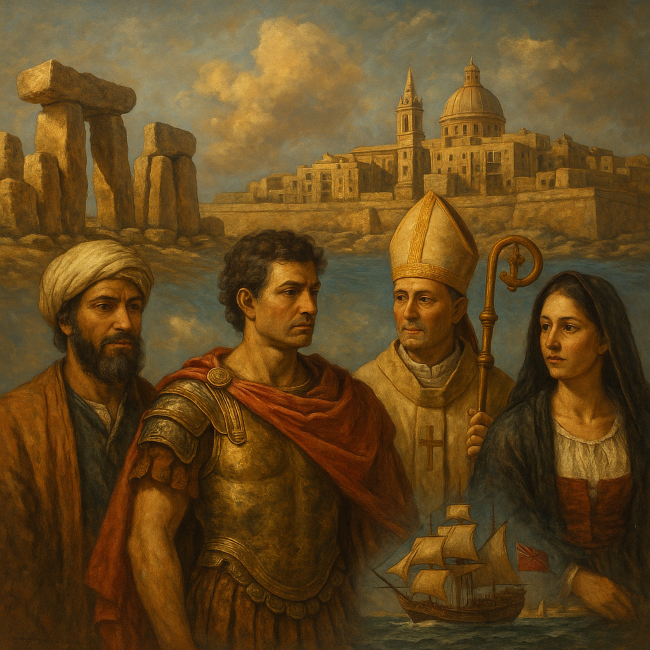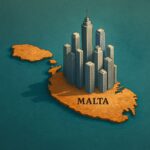| Malta Short Let: Cozy Stay in Gzira | |
|
Sliema Area Modern Designer Finished 2 Bedrooms + Games Room. First floor with Maltese Balcony Large back Terrace with swinging sofa Fully Airconditioned + Full Kitchen 3 TVs, including 65” with backlight. |
 |
|
Book Now: Google Travel | Direct (Cheapest) | Booking.com | Airbnb |
|
Lessons from Malta’s Colonial Era
What if your homeland’s identity was forged not by choice, but by centuries of conquests—each invader leaving a layer that blended resilience with reinvention? Nestled in the Mediterranean, Malta boasts megalithic temples older than Egypt’s pyramids, yet its people have navigated a whirlwind of rulers, from Phoenicians to British. As historian Henry Frendo details in “Maltese Colonial Identity: Latin Mediterranean or British Empire?” (from The British Colonial Experience 1800-1964), this tiny archipelago became a living experiment in cultural fusion. Malta’s journey offers a powerful paradigm for navigating dual identities, proving that cultural hybridity can be a source of profound strength and resilience in our globalized world.
The Forging of a Unique Identity: Layers of Influence
Malta’s essence emerged from millennia of overlays, grouped here by their enduring impacts on language, religion, and strategy—setting the stage for colonial tensions.
Linguistic Foundations: Malta’s identity began with prehistoric temples (3600–2500 BC), followed by Phoenician linguistic roots (750 BC) and Roman Christianity (AD 60), as explored in depth at Phoenician History Malta. Arabs conquered in AD 870, lasting until 1091, enriching Maltese with Semitic elements like qanat (terraced fields) and place names, a legacy detailed in Roots of Resilience. Sicilian and Knightly rule (1530–1798) layered Italian, creating a trilingual society where Maltese coexisted with Italian for elites and English later on. This blend fostered adaptability, mirroring today’s multilingual professionals thriving globally.
Religious Pillars: Romans introduced Christianity via St. Paul’s shipwreck (AD 60), a faith that persisted through Arab rule—despite Islam’s presence, the population remained Christian, a story tied to St Paul’s Islands, Malta. The Knights of St. John fortified this Catholic identity with churches and hospitals, symbolizing European defiance, as seen in The Knights of Malta. Frendo highlights how parish life unified rural and urban Maltese, anchoring them amid change—much like modern communities preserve heritage against globalization.
Strategic Importance: Malta’s position made it a prize. The Great Siege of 1565 saw Knights and locals repel Ottoman forces, a “symbol of Maltese fortitude” (Frendo), fostering early nationhood, with insights at The Great Siege of Malta. Napoleon’s 1798 occupation sparked an uprising, hinting at self-awareness, detailed in The French Invasion of Malta. British rule from 1800 turned Malta into a naval fortress, its strategic role peaking in WWI as the “Nurse of the Mediterranean,” treating 136,000 wounded (Schembri et al., 2018), with life during this period explored at Life on a Fortress Island During WWI. Over 5,600 joined the Maltese Labour Corps (MLC), building piers and tunneling in Mudros, Gallipoli, Salonika, Taranto, and Treviso, losing 124 men mostly to disease (Caruana & Zammit). This service, detailed in cartographic studies (Schembri et al.), created shared sacrifice, boosting national pride.
These layers culminated in British colonialism. Valued as a naval base, Malta faced language battles in the 1880s: Pro-British reformers pushed English, viewing Italian as obsolete. Nationalists like Fortunato Mizzi defended Italian as Malta’s European soul. Frendo portrays the Maltese as “South European”—thrifty, adaptable, yet parochial—speaking Semitic Maltese at home but Italian officially. This duality molded a “colonial identity,” evolving into sovereignty by 1964.
A Life Lesson: Embracing Hybridity Without Losing Your Core
History whispers: Identity thrives in negotiation. Each conquest added depth—Phoenician trade sparked adaptability; Arab innovations, linguistic richness; Knights’ defiance, courage; British pragmatism, global links. Frendo warns alienation brews when balance tips; adapt while clinging to roots.
This resonates today. Immigrants blend heritage with host cultures, like Maltese in Australia preserving Catholicism amid English fluency. Professionals fuse skills without erasing passions—growth through synthesis. Malta’s core? Faith and community: Parish life united lifestyles, as Frendo notes, from rural festas to urban cafes, a cultural thread woven into Traditional Boats of Malta. The MLC embodied this—laborers left as breadwinners, returned with stories of sacrifice, reflecting “growth through balance” (Caruana & Zammit), a resilience echoed in Economic Resilience Through Geographic Diversification.
Modern nations mirror this: Singapore fuses Asian traditions with Western efficiency; UAE, Bedouin roots with global hubs. Personally? It’s adopting a new habit while honoring family rituals—resilience in flux.
Why This Matters: Understanding the Past to Shape the Future
Malta’s saga shows empires unwittingly nurture nationalism. The 1798 uprising ignited self-awareness; British stability allowed maturation. By 1964, Malta stood unified, shedding shackles, a journey paralleled in The Strategic Role of Malta in WWII.
Overlooked? Small islands punch above weight: WWI hospitals, WWII’s George Cross, and EU membership as its smallest state, with more at Why Is Malta Important. Frendo’s insights—drawing on 1870s demographics—reveal how everyday life fueled resistance.
In polarized times, Malta urges empathy: Strength blooms in synthesis. As Frendo writes, identity was “moulded by history, geography, and ethnic admixture,” turning conflict into clarity, a theme explored in The Heartbeat of Ancient Malta.
Pondering cultural crossroads? Malta proves adaptation isn’t surrender—it’s stylish survival. What’s one blended influence in your life?








